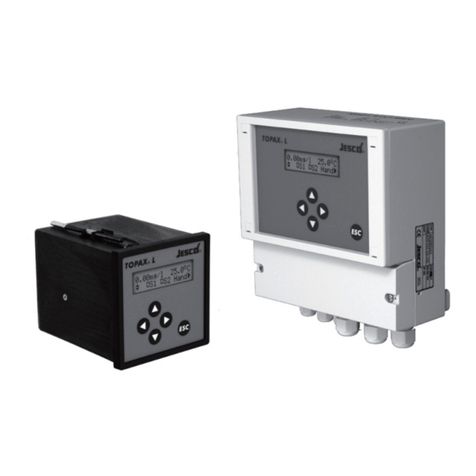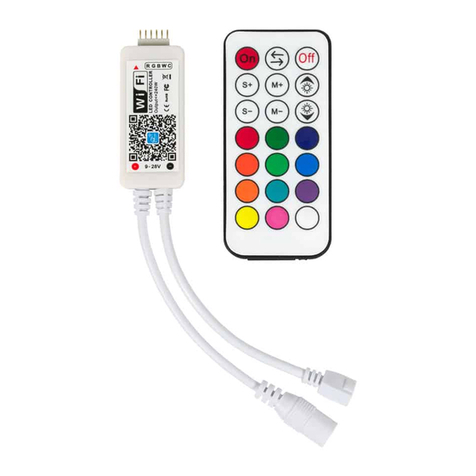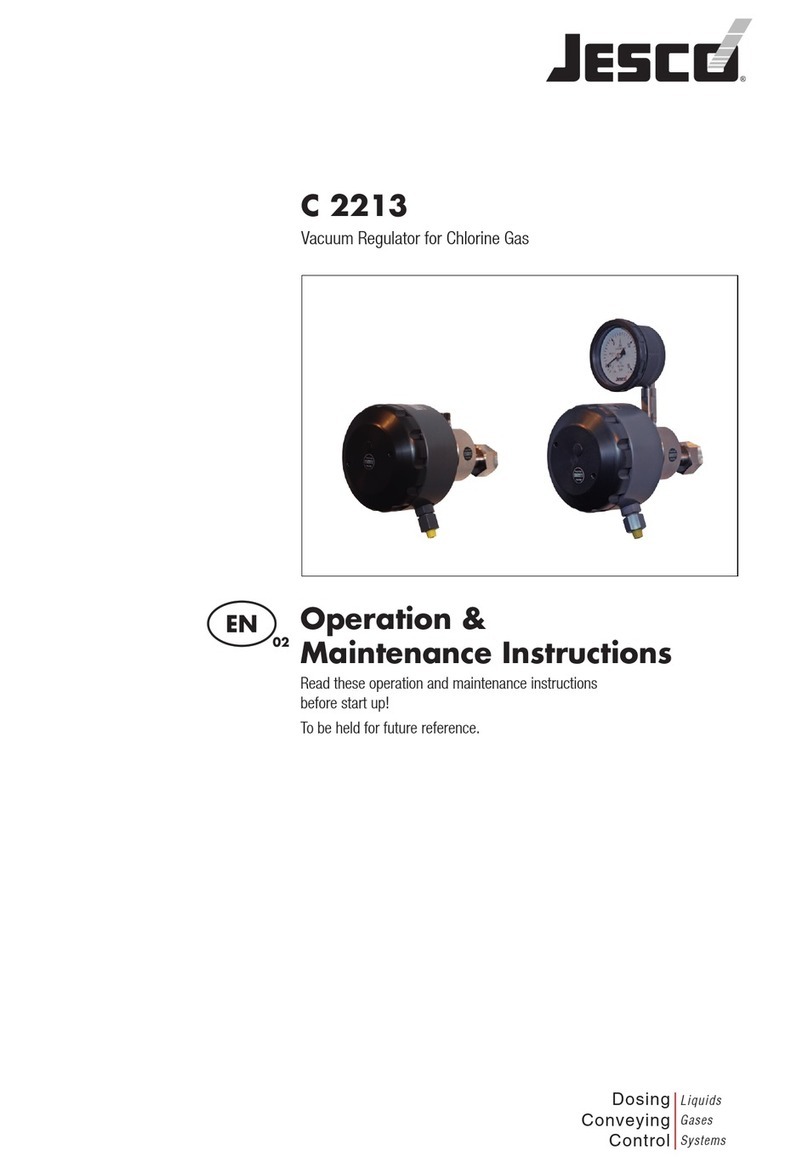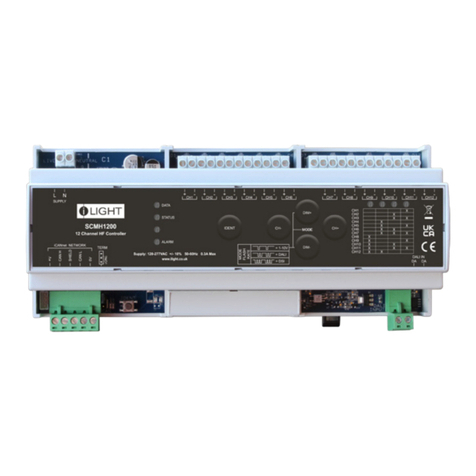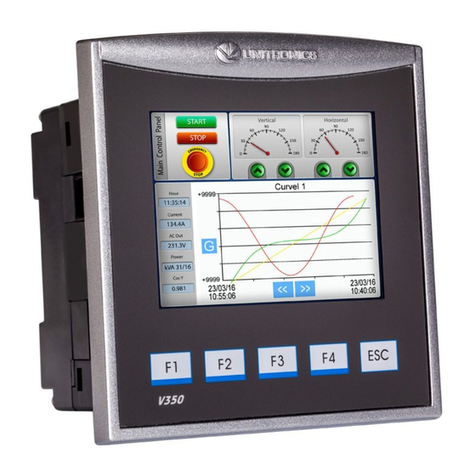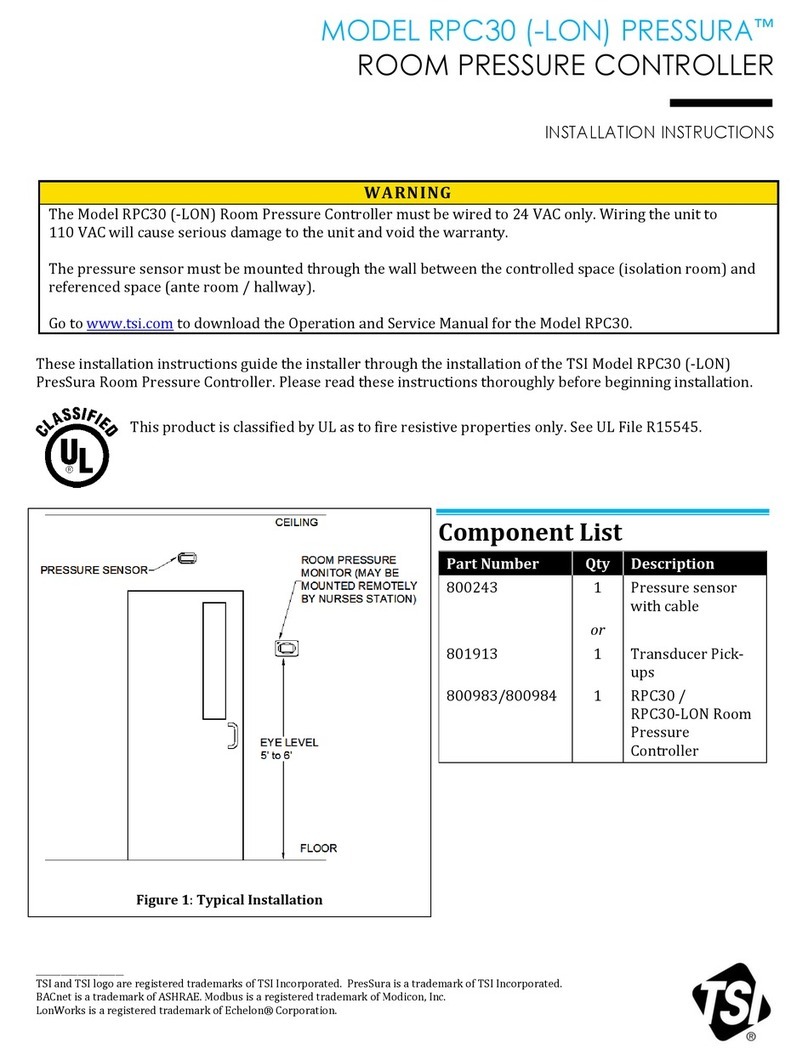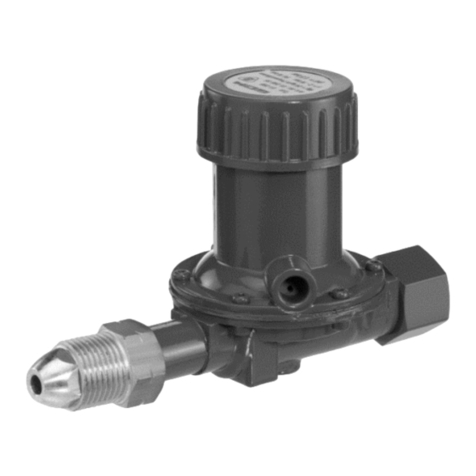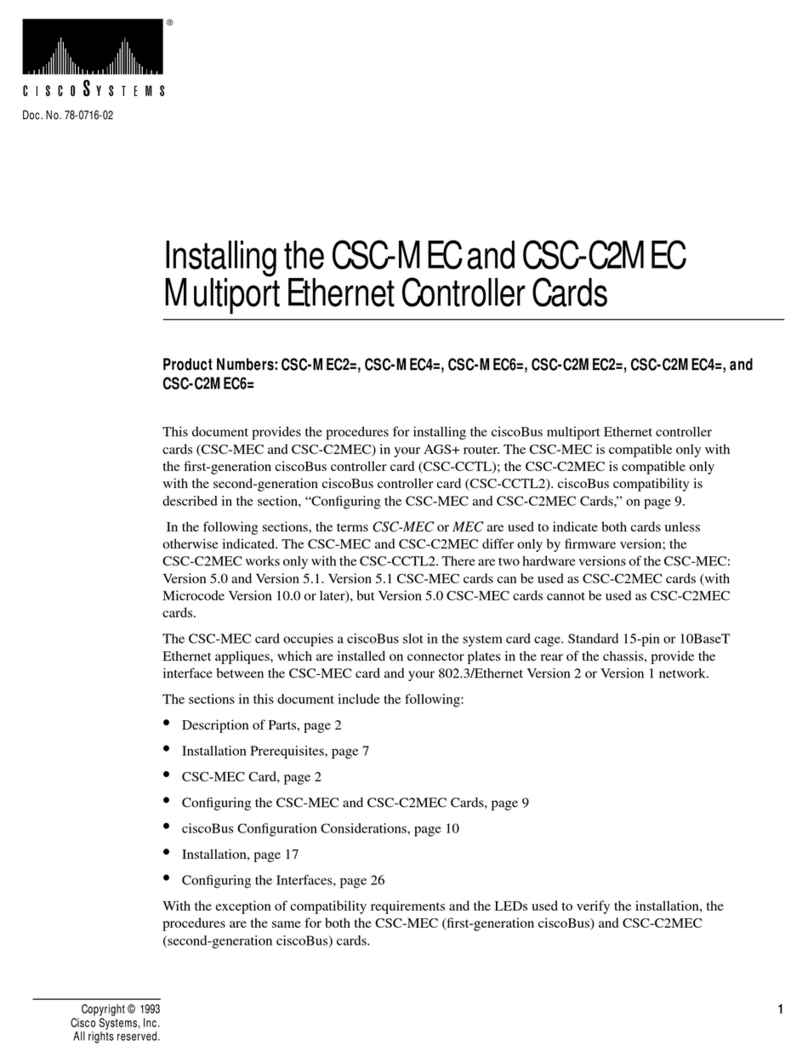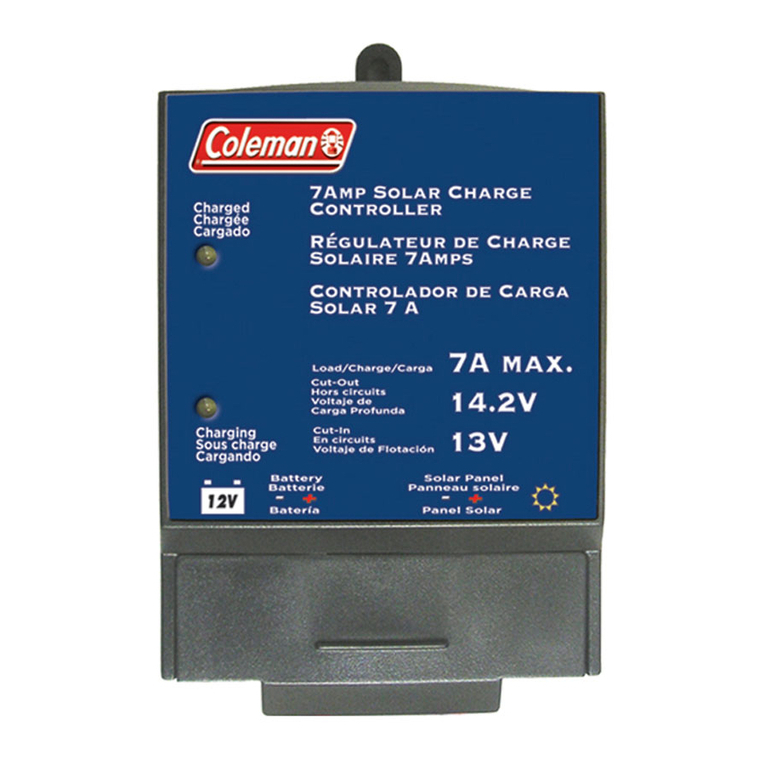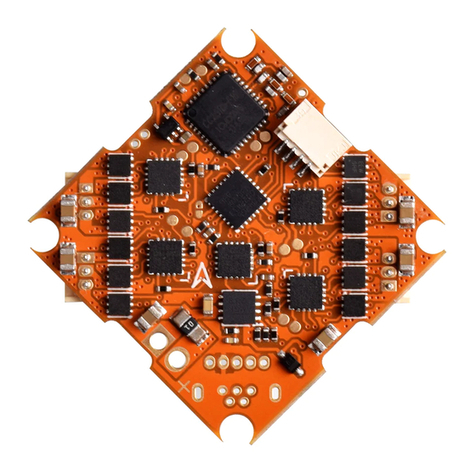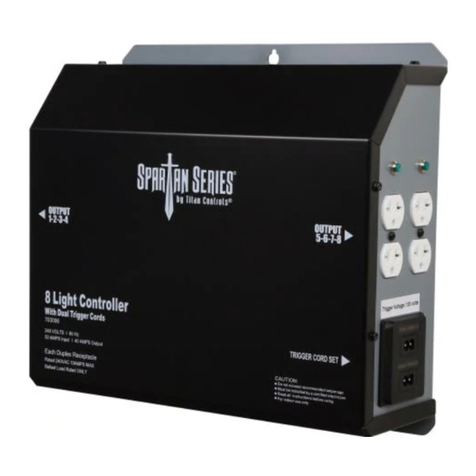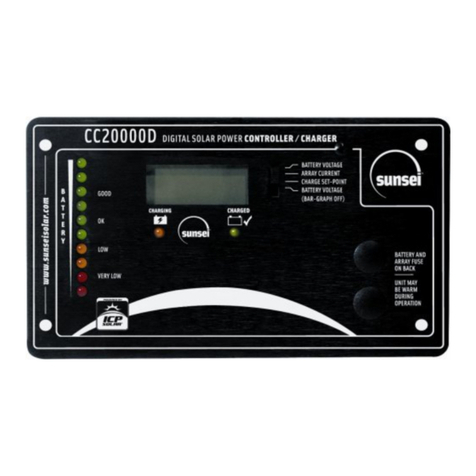Jesco TOPAX DX Instruction Manual

TOPAX®DX
Multi-Channel Controller
EN 01 Operation & Maintenance Instructions
Read this operating instructions before start up!
To be retained for future reference.
Dosing
Conveying
Control
Liquids
Gases
Systems

2 | Operation Manual TOPAX DX | BA-40100
List of Contents
1. Safety ................................................................................................... 3
1.1 General ................................................................................................ 3
1.2 Warnings used in this Operation & Maintenance Manual.......................... 3
1.3 Operators qualification and training........................................................ 3
1.4 Electrical safety tips .............................................................................. 3
1.5 Hazards due to non-compliance with the safety instructions .................... 3
1.6 Safe operation ...................................................................................... 3
1.7 Safety instructions for the operator......................................................... 3
1.8 Safety instructions for installation, maintenance and inspection................ 3
1.9 Self-made modifications and spares procurement................................... 4
2. Before placing in operation................................................................. 4
2.1 Compliant use ...................................................................................... 4
2.2. Scope of delivery.................................................................................. 4
2.3 Steps to take for start-up....................................................................... 4
3. Technical data...................................................................................... 5
3.1 Cable recommendation ......................................................................... 6
3.2 Order variants....................................................................................... 6
4. Mounting build-in housing.................................................................. 7
4.1 General notes of instruction ................................................................... 7
4.2 Wall mount ........................................................................................... 7
4.3 Product overview .................................................................................. 8
4.4 Technical components........................................................................... 8
4.5 Power connections.............................................................................. 10
4.6 Terminal clips on the technical components .......................................... 12
4.7 Operation and keyboard layout............................................................. 14
4.8 First set-up and programming guidelines.............................................. 14
4.9 Next steps .......................................................................................... 17
5. Measuring values inputs ................................................................... 18
5.1 Free chlorine measurements input ....................................................... 18
5.2 Measuring input pH value.................................................................... 20
5.3 Measurement output Redox potential .................................................. 21
5.4 Measuring input temperature............................................................... 22
5.5 Measurement input total chlorine and display of bonded chlorine........... 22
5.6 Conductivity measurements input......................................................... 22
6. Explanation of digital inputs ............................................................. 23
6.1 Start-up lag time................................................................................. 23
6.2 Deactivation of the controller function with alarm signaling in the case of lack
of sample water........................................................................................ 23
6.3 Controller function deactivation (filter cleaning) without alarm ................ 23
6.4 Pre-alarm, alarm and warning "level dosing pump"............................... 23
7. Explanation measuring values outputs ............................................ 24
7.1 Output types....................................................................................... 24
7.2 Output limit switch .............................................................................. 24
7.3 Actuator elements............................................................................... 24
8. Controller explanation ....................................................................... 25
8.1 Proportional controller (P controller)...................................................... 25
8.2 Proportional-integral-derivative controller ((PI, PID controller) ................. 25
8.3 Calculation of setable values................................................................ 25
8.4 Controller parameters.......................................................................... 26
8.5 Controller direction.............................................................................. 26
8.6 Base load metering ............................................................................. 26
8.7 Manual operation................................................................................ 26
9. Alarms................................................................................................ 27
9.1 Measuring values alarms..................................................................... 27
9.2 Emergency stop (Y-alarm).................................................................... 27
10. Analogue power outputs 0/4...20 mA for remote display .............. 27
11. Night operation ................................................................................ 28
12. Economy mode - DIN-contact and ECO-contact ............................ 28
12.1. TOPAX®DX is responsable for economy mode................................... 28
12.2. TOPAX®DX controlled DIN-contact only ............................................. 28
13. Control of the flocking pump .......................................................... 29
14. Log book function............................................................................ 29
15. Auto setup (First system self-setting) ............................................ 30
16 Menu configuration and main settings............................................ 31
16.1 Menu of TOPAX®DX ......................................................................... 31
16.2 configuration example and terminal connection................................... 39
17. Wiring diagrams .............................................................................. 40
17.1 Examples overview............................................................................ 40
18. Software updates............................................................................. 49
18.1 Firmware update............................................................................... 49
18.2 Update for further menu languages.................................................... 49
19. Default settings................................................................................ 49
20. Spare parts and options .................................................................. 50
21. MMC (Multi-Media-Card) memory card.......................................... 50
22. Troubleshooting and diagnostics.................................................... 51
23. terminal connection diagram for own configurations ................... 52
24. Index................................................................................................. 54
25. Declaration of conformity................................................................ 55
26. Device revision................................................................................. 56
27. Warranty Application....................................................................... 57

BA-40100 | Operation Manual TOPAX DX | 3
Chapter 1: Safety
1. Safety
1.1 General
This manual contains very important information for assembly,
start-up, use and maintenance of the meter. Please have your
staff and any person in charge of the unit read and understand
this manual before starting any work with it. Store this manual
safely in a place where mechanics, installers and other techni-
cal staff as well as operators can rapidly access it in case of
emergency. Pay special warning and provide compliance with all
safety notices in this manual!
1.2 Warnings used in this Operation & Maintenance Manual
This Operation & Maintenance Manual contains vital information
which may endanger people and the unit if they are disregarded.
These statements are identified by the following symbols:
WARNING!
Refers to a potentially hazardous situation. Non-
compliance can lead to death or extremely serious
injury.
CAUTION!
Refers to a potentially hazardous situation. Non-
compliance can lead to minor injury or property
damage.
IMPORTANT! or NOTICE!
Appears in conjunction with safety instructions
which may endanger the machine and its operation
if disregarded.
IMPORTANT!
Draws attention to supplementary information to
make the work easier and ensure troublefree opera-
tion. Appropriate reference attached directly on the
unit or any of its other parts must absolutely be con-
sidered and held in completely readable condition for
future reference.
1.3 Operators qualification and training
Your assembly, operation, maintenance and inspection staff must
be trained and have the appropriate qualification for use and op-
eration of the unit. Area of responsibility, tasks and supervision
of the personnel must be provided at all times by the customer.
Unskilled operators must be duly trained and instructed. If neces-
sary, this can also be undertaken by the manufacturer or certi-
fied supplier on behalf of the owner. Operators who are to work
with the meter must read and understand the manual in all of
its parts.
1.4 Electrical safety tips
When installing and using this electrical equipment, basic safety
precautions should always be followed, including the following:
WARNING!
1.) Read and follow all instructions.
2.) To reduce the risk of injury, do not permit children
to use this product unless they are closely super-
vised at all times.
3.) Risk of Electric Shock. Ensure that the device is
secured with a ground fault - circuit breaker (GFCI
= earth-leakage circuit breaker). Contact a qualified
electrician if you cannot verify that the receptacle is
protected by a GFCI.
4.) Do not bury cord. Locate cord to minimize abuse
from lawn mowers, hedge trimmers, and other
equipment.
5.) To reduce the risk of electric shock, replace dam-
aged cord immediately.
6.) To reduce the risk of electric shock, do not use
extension cord to connect unit to electric supply;
provide a properly located outlet.
7.) Keep this instruction at close for future refer-
ence.
1.5 Hazards due to non-compliance with the safety
instructions
Failure to comply with the safety instructions may endanger not
only people, but also the environment and the unit. Non com-
pliance with the safety information will immediately cancel your
rights of claiming for damages even during the warranty period.
The following hazards in particular may arise: - Failure of system
functions. - Danger to people due to electrical, mechanical and
chemical effects. - Danger to the environment due to leakage of
hazardous substances.
1.6 Safe operation
The safety instructions contained in this Operation & Maintenance
Manual must be observed. The owner is responsible for ensuring
compliance with local safety regulations. Disturbances suscepti-
ble of impairing safety are to be eliminated immediately!
1.7 Safety instructions for the operator
Statutory regulations must be observed. A safe and ecologically
beneficial disposal of process materials as well as replacement
parts must be ensured. Danger due to electric current must be
excluded (for further details, refer to the German VDE1) standards
as well as local rules and regulations as well as chapter 1.4).
1) Association of German Electrotechnical Engineers
1.8 Safety instructions for installation, maintenance and
inspection
The operator has to ensure that all assembly, maintenance and
inspection works are done by authorized and qualified technical
operators.

4 | Operation Manual TOPAX DX | BA-40100
Chapter 2: Before placing in operation
WARNING!
Assembly and maintenance of the equipment
are to be strictly done after disconnecting the
device from the power supply. It must be se-
cured against reconnection during the works!
Auxiliary assemblies and tools should be dismounted
prior to maintaining. Cables are to be attached like-
wise only in this condition.
Neglecting of these instructions can lead to severe damages of
TOPAX®DX and loss of warranty.
All safety mechanisms and guards must be refitted and reacti-
vated as soon as the work is complete.
NOTICE!
Apart from an incorrect installation also wrong con-
troller settings (default settings, data of the param-
eter and configuration level, and internal changes of
the instrument) can impair or damage the process
normal functions.
There should always be a safety device that is independent of the
controller. Configurations may only be carried out by technical
personnel! If necessary use password protection! Always comply
with the safety regulations and accident prevention laws of the
country of use.
1.9 Self-made modifications and spares procurement
TOPAX®DX may be converted or changed only by qualified tech-
nical personnel.
If the configuration of the TOPAX®DX is wrongly made by as-
sembly or service personnel, errors and dangers in the function
of the machine can result. In this case, the manufacturer declines
any liability.
NOTICE!
Genuine spare parts and sensors authorized by the
manufacturer ensure greater safety. Otherwise the
guarantee expires.
2. Before placing in operation
2.1 Compliant use
Der TOPAX®DX is especially designed and meant for metering
and control applications in swimming pools, SPA and bath wa-
ters, water treatment plants and waste water management. The
operational safety of the delivered unit can only be guaranteed
when it is used in conformity with its intended use.
Other usage and modifications will determine the immediate can-
cellation of the warranty and any other manufacturer’s liability.
2.2. Scope of delivery
Carefully check the delivery before installation and refer to the
delivery note to ensure the delivery is complete and to check
for any transport damages. Contact the supplier and/or carrier
regarding any questions concerning the delivery and/or transport
damages.
Do not operate any defective devices.
The following belong within the scope of delivery:
• TOPAX®DX casing (as per the model)
• Tool (M4 screw) to open the casing
• MMC memory card
• Mounting material
• Operation & Maintenance Instructions
• Measuring protocol
• Terminal plan for the sensors
• Electrodes (optional)
• Cable connection TOPAX®DX to the electrodes (optional)
The device is delivered either as detached or mounted onto a
measuring water table.
2.3 Steps to take for start-up
The following steps are recommended by the manufacturer in
order to install the TOPAX®DX successfully:
• Reading the operation manual
• Mount the device
• Attach the sensors and actuating element (to the controlling
pumps and switch, etc.)
• Initial configuration of the in- and output (see chapter 4.8)
• Calibrate the sensors to the measuring output (see chapter
5 and 6)
• Set up the set points (see chapter 16, menu 1.1)
• Set up the control (see chapter 16, menu 2.1)
• Configuration of the regulating output (see chapter 7)

BA-40100 | Operation Manual TOPAX DX | 5
Chapter 3: Technical data
3. Technical data
Supply voltage 90...264 VAC, 47...63 Hz
Power consumption Approx 24 W
Housing dimensions 302 x 231 x 108 mm (W x H x D) wall mounted unit
Display Graphic colour display 5.7 inch, 320 x 240 pixels (RGB), with background lighting
Keyboard Glass keyboard with touch keys
Measuring inputs
(potential-free)
- inputs for free chlorine, pH value, REDOX potential, temperature
- 4...20 mA input for the measurement of total chlorine and controlling of bonded chlorine with supply of the electrode (24 VDC)
- 4...20 mA input for conductivity (passive) measurement and control
Regulating characteristic for 4
inputs (free chlorine, pH value,
bonded chlorine, conductivity,
depending of configuration level)
P, PI, PD or PID performances
Fixed value regulation, standard channel selectable with disturbance variable feed forward
2-side controller
Control parameter Xp: 1...500%, Tn: 1...200 min., Tv: 1...1200 sec.
Measuring input for free chlorine open amperimetric electrode with mechanical cleaning (excess chlorine detector with 2 electrodes, CS 120)
Measuring range adjustable between 0-1,00 mg/l, 0-2,00 mg/l, 0-5,00 mg/l or 0-10,00 mg/l. connection via line-up terminals*
Potentiostat (PM)
Measuring range adjustable between 0-1,00 mg/l or 0-2,00 mg/l
Encapsulated electrode 20 mA type, measuring range depending on type of electrode
Measuring input for pH value Measuring range pH 0..14 connection via line-up terminals*
REDOX potential measuring input Measuring range 0..1,000 mV connection via line-up terminals*
Temperature measuring input
- Pt 100
Measuring range -10°C ...
+100°C
two-leader connection by means of line-up terminals*
Total chlorine measuring input Encapsulated electrode 20 mA type, measuring range depending on type of electrode
Conductivity measurement Conductive and inductive with
separate measuring amplifier
20 mA type, measuring range depending on type of measuring amplifier
Disturbance factor input 0/4...20 mA programmable
Disturbance factor: 0.1...10 times amplification
Digital inputs - Early warning level input for metering pump 1
- alarm level input for metering pump 1
- Early warning level input for metering pump 2
- Alarm level input for metering pump 2
- Filter cleaning: disconnection of the controller function without alarm
- measuring water shortage disconnection of the regulating function with alarm (external cut off)
- activate night-time economy mode
Automatic controller outputs Electronic output
(optocouplers)
- 48 VDC; 250 mA
(pulse frequency 10... 200 impulses/min)
Relay output - ON/OFF
- pulse frequency 10...100 Impulses/min
- Pulse length 10…120 seconds
- 3-point step output with
- Position feedback
value of the Potentiometer 1...10 kOhm
continuous output - 0/4...20 mA, max. load 500 ohms
Alarm output Relay output as collective alarm for the measuring size of free and bonded chlorine, pH value, redox potential, temperature and
conductivity as potential free changer
Measuring value alarm min. and max. alarm freely adjustable, time delay adjustable: max. 200 min
Safety shut off To prevent over metering (Y-alarm), time delay adjustable: max. 200 minutes
Current outputs to remote trans-
mission of measuring values
- Free and unbonded chlorines
- pH value
- Redox potential
- temperature and conductivity
0/4...20 mA possible spreading; max. load 500 ohms potential free
average spreading >50 % with measuring input free chlorine and 0/4...20mA
>10% during measurement input of pH-value and redox potential
Computer interface (optional) RS 485
Load capacity of the relay 230 V AC, 3A
Protection class IP 65 with locked screw connections
Ambient temperature -5°C ... +45°C
Atmospheric moisture 95 % non-condensing
*) max. 0,5 mm² with cable ends protection sleeve and max. 1,0 mm² without cable end sleeve.

6 | Operation Manual TOPAX DX | BA-40100
Chapter 3: Technical data
3.1 Cable recommendation
Recommended cables for the different connections and applications:
Connections and applications dimensions Types
Mains voltage M20 X 1,5 NYM-I 3 x 1,5 mm ( 9,1 mm)
Relay output (ATE- engine) M20 X 1,5 NYM-I 4 x 1,5 mm ( 9.8 mm)
Relay output (pulse frequency), (pulse length) M16 X 1,5 NYM- O 2x 1,5 mm ( 8,7 mm)
Relay output alarm) M16 X 1,5 NYM- O 3x 1,5 mm ( 9,1 mm)
connection to PC, computer cable Cat 5 M12 X 1,5 Type 2X2XAWG24/1 ( 5,7 mm)
Connection of current outputs (remote communication cable) M12 X 1,5 J-Y (St) Y 4 x2x0,6 mm ( 6,5 mm)
Position feedback ATE- engine (remote communication cable) M12 X 1,5 J-Y (St) Y 2x2x0,6 mm ( 5,0 mm)
Continuous controller output (remote communication cable) M12 X 1,5 J-Y (St) Y 2x2x0,6 mm ( 5,0 mm)
Input chlorine measuring cell M12 X 1,5 LIYY 2x 0,25 mm
Digital inputs (for each input) (remote communication cable) M12 X 1,5 J-Y (St) Y 2x2x0,6 mm ( 5,0 mm)
3.2 Order variants
The TOPAX®DX is available in different product variants upon request. The following five variants are standard articles:
Order no. 40100001 40100002 40100003 40100004 40100005
Inputs
Component 78403 X X X X X
Component 78404 X X X X
Free chlorine Measuring cell (optional):
Amperometric (Excess chlorine detector with 2 electrodes CS120) X X X
Potentiostatic X X X X
Diaphragm-covered X X X
pH value X X X X X
Redox X X X X X
Temperature X X X X X
Position feedback with 3-point-steps controller 1 2 2 2 2
Measurement of total chlorine by means of an encapsulated electrode with integrated electronic
amplifier (4...20 mA input with electrode electronics supply)
X X
Measurement of conductivity with a separate measurement amplifier (4...20 mA input) X X
Outputs
Component 78399 X X X X X
Controller with 3-point stepping output with potentiometer feedback, pulse length output, Pulse
frequency output, ON/OFF switching output or 0/40...20 mA power output
1 2 2 2 2
Controller with pulse length output, pulse frequency output, control output IN/OUT or current
output 0/4...20 mA
1 1 1 2

BA-40100 | Operation Manual TOPAX DX | 7
Chapter 4: Mounting build-in housing
4. Mounting build-in housing
4.1 General notes of instruction
For installation, the local directions and regulations have to be
adhered to. Any mounting position is possible. The ambient con-
ditions are to be maintained in accordance with the technical
data. Exposure of the unit to direct heat and sunlight must be
avoided.
Diagram TOPAX®DX housing
The front housing ④and the reare housing ①of TOPAX®DX
are securely bolted together with two bolts (see ②and ③in fig.
4.1). The construction is so arranged that the TOPAX®DX can be
opened and accessed on both sides.
③
①
②
④
Fig. 4.1: Front and reare housing
Opening the casing
The bolts (hinge pivots) are purposely tightened so that they can
only be removed using a tool. To unscrew, first release the nuts⑤
at the top with the help of a screwdriver at one axis, and this axis
⑥ can be pulled out downwards. The curled thumb M4 screw ⑦
provided serves as a tool for this, which is screwed in the axis
from underneath (see fig 4.2).
When the reassembling, make sure to fit all nuts back in place.
NOTICE!
In order to open the housing remove only one hinge
pivot from the equipment. If both bolts are removed
at the same time, the upper part and the lower part
of the box will fall loose.
⑤
⑦
⑥
Fig. 4.2: Open the casing onto the casing fastener on the wall and/or onto the
cable connection fastener.
NOTICE!
The equipment is to be opened only when plugged
off the power supply.
4.2 Wall mount
For the wall assembly 4 mounting holes are to be found in the
lower part of the housing. The hardware for wall fixation is pro-
vided with the unit by the manufacturer (see fig. 4.3).

8 | Operation Manual TOPAX DX | BA-40100
Chapter 4: Mounting build-in housing
Fig. 4.3: Spacing of hole for monting the device (left) and the device dimensions
4.3 Product overview
The TOPAX®DX device is composed of two parts, a rear and
a front housing (see Abb. 4.1). The rear shell of the housing is
electrically connected with a flat cable with the front one.
reare housing
consists of rear housing with the motherboard, in which the cable
connections are screwed in.
On the motherboard there are the main modules for the function-
ing. Depending upon the model, two input blocks are available
together with an output block. For networking purposes with con-
nection to a PC, an additional interface (RS485) is available. All
blocks are connected by plug connectors to the motherboard and
fastened with several nuts.
front housing
On the front housing there are the display plate and the key-
board. A colour display is available for displaying measurements
and adjustments. The operation takes place with 6 function keys
as well as a control cross with "OK" key. The keys are integrated
in a glass keyboard and react to contact. All displays of the indi-
vidual menus appear as plain text.
Fig. 4.4: Front and reare housing (left) with display and reare housing.
4.4 Technical components
Besides the main board, the following can be fitted in addition
• up to 2 input components
• an output component and
• an Interface module (RS 485)
(see Fig. 4.5) To operate the TOPAX®DX at least one entry com-
ponent has to be built in.
Ausgangsbaugruppe
Hauptplatine
DO4 DO3 DO2 DO1
78404
78403
78402
DO7 DO6 DO5
DO0
78399
Rechnerschnittstelle (verdeckt)
78406
+-
+-
+-+-+-+-+-+-
1
2
3
4
5
6
7
8
9
10
11
12
13
14
15
16
17
18
19
20
21
22
23
24
25
26
27
28
29
30
31
32
20 mA Stromausgänge Digitale Eingänge
36
37
38
PE
N
L
Netzteil
33
34
92
93
94
87
88
89
90
91
86
-+
81
82
83
84
85
- -+ +
56
57
58
59
60
-+
51A
52A
53
54
55
61
51B
52B
- -+ +
-
+
71
72
73
74
75
76
77
78
Eingangsbaugruppe
5-fach
Alarmrelais
39
40
41
43
44
45
46
42
35
95
96
B
A
Eingangs-
baugruppe
3-fach
Steckverbindung
zur Displayplatine
Fig. 4.5: Arranging the components on the main board
Main board (order no. 78402)
Besides this function, to incorporate the further components, the
main board is made up of the following connections:
• 8 analogue power inputs (0/4...20mA)
• 8 digital inputs
• Alarm relay
• power supply
5-fold Input block (Code 78403):
with 5 measurement inputs for:
• free chlorine (amperometric or membrane covered elec-
trode) (0/4...20 mA)
• pH single-rod measuring cell
• Redox single-rod measuring cell
• Temperature sensor Pt100
• Position feedback of an eventual servo motor with potenti-
ometer
171 mm
267 mm 302 mm
240 mm
171 mm
267 mm 302 mm
240 mm
Reverse side

BA-40100 | Operation Manual TOPAX DX | 9
Chapter 4: Mounting build-in housing
3-fold Input block (Code 78404):
with 3 measurement inputs for:
• free chlorine (potentiostatic electrode)
• Position feedback of an eventual servo motor with potenti-
ometer
• a 0/4...20 mA power entrance for the connection of a
disturbance factor or a conductivity measuring unit with
upstream measuring amplifier
IMPORTANT!
When free chlorine potentiostatic electrode is used
in a 5-fold input block, it is possible to connect also
a total-chlorine electrode. At the same time bonded
chlorine is calculated by PC and displayed.
Output board (order no. 78399)
On the output block there are 5 integrated relay output and 3
electronic outputs (optocouplers).
The following output can be configured:
• Controller output free chlorine
with different functions
• Controller output pH value
with different functions
• Controller output bonded chlorine
with different functions
• Controller output conductivity
with different functions
• DIN - contact: Free contact if all conditions of the DIN-
Standards are respected.
• Contact for starting of the flocking pump.
The software configuration automatically assigns these outputs
to the respective terminals in a sequential order- depending on
the configuration of the TOPAXTOPAX®DX:
1. Automatic controller free chlorine
2. Automatic controller pH value
3. Automatic controller bound chlorine
4. Automatic controller conductivity
5. DIN - contact
6. Eco - contact
7. Flocking contact
Depending upon output type, TOPAX®DXselects the next free
relay output or optocoupler. The clamps are assigned in a firm
order: clamps 87/88 to 95/96 for relays, or 81/82 bis 85/86 for
optocouplers.
NOTICE!
For further information on the terminal connection,
refer to Chapter 4.6
Interface board RS 485 (order no. 78406)
The TOPAX®DX has the option of being fitted with a serial inter-
face RS 485. The RS 485 allows you to transfer data to a PC. The
data communication protocol installed is MODBUS.
With the RS 485 interface it is possible to connect more than one
TOPAX®DX to a network. For this an address is to be assigned
to each TOPAX®DX. In addition to this each TOPAX®DX is fitted
with a computer-interface RS 485.
It is possible to have a maximum of 1000 m of data transfer with
the RS 485 interface. Up to 14 TOPAX®DXs can be connected to
a network with a PC.
An example of a network with more than one device is shown in
chapter 17.
NOTICE!
The data line is to be attached direct to the con-
necting terminals of the TOPAX®DX (clip A and B).
Separate clamping or branching boxes should not be
set. The network address 10 is not permitted.
IMPORTANT!
For the realization of a network with the TOPAX®DX
and the structure of a bus system to a PC a computer
cable "KAT.5 type 2X2XAWG24/1 (Lapp cable)" or
better is to be used.
Using other cables can cause data errors and affect the data
communication. The manufacturer is not liable for this.
Most modern computers are equipped with the serial computer
interface R-S 232 and/or with USB - interfaces. For the connec-
tion to a RS 485 network, an additional connector converter (RS
485 to RS 232 or RS 485 to USB) is necessary.
There are interface components in the under casing part of the
main board in the TOPAX®DX. They are partially hidden from
view by the output components (see diagram 4.6).
Fig. 4.6: RS 485 connections on the interface component’s board partially hid-
den from view by the output components

10 | Operation Manual TOPAX DX | BA-40100
Chapter 4: Mounting build-in housing
NOTICE!
The data line must be locked at both sides with a
120 Ohm line resistance and must be supplied a
firm potential using the two link plugs on the two
jumpers on the circuit board of the display of all la-
test TOPAX DX versions.
Two link plugs/jumpers have to be connected to the TOPAX®DX
(the last one in the network) for the 120 ohm switch, Pull-up and
Pull-down resistances. The resistances are not active in its deliv-
ered state. The resistance of 120 ohms on the PC side is applied
via the connector converter.
The jumper plug-in slots are located in the upper casing on the
display board, above the flat band-connection to the main board
(see diagram 4.7).
resistances are NOT activated
(delivery status)
resistances are activated
(last device in the network)
Jumper position: OFF Jumper position: ON
The resistances are NOT active.
jumpers are set DOWN
The resistances are active.
jumpers are set UP
Fig. 4.7: Position and setting of the jumper to activate the RS 485 resistances
on the last TOPAX®DX in the network.
TopView Software
For the remote indication a visualization program is offered in two
versions. The program TopView mini is free of charge and can be
downloaded from Internet.
4.5 Power connections
The equipment may be installed and attached only by authorized
and qualified electricians. Connections must be made according
to the enclosed wiring diagrams.
NOTICE!
Only work on electric connections when the device is
disconnected from the power supply.
Insert the cables in the various connections screwed on the bot-
tom side of the housing. After the installation, tighten all cable
connections so that the required protection class is provided (see
fig. 4.8).
Fig. 4.8: Cable connections for protected cable feedthrough on the rear side of
the housing.
For the connection to the power supply and to the actuators,
TOPAX®DX is equipped with special terminal clips (see fig. 4.9).
For a better assembly these clamps are designed plug-ins (see
fig. 4.10), whereby the maximum cross section is 2.5 mm2for
the power cord and 1.5 mm2for all other cable to the terminal
clips.
Fig. 4.9 and 4.10: The principle of the connecting terminal to the technical com-
ponents. Individual connecting terminals, removable for installation, of
the technical components.
NOTICE!
When choosing the line material, for installation and
electrical connection of the device, observe the regu-
lations of VDE 0100 “Provisions for setting up elec-
tric power plants with nominal voltages below 1000
V“ or the individual national rules.
NOTICE!
The equipment is not suitable for the installation in
explosive conditions!

BA-40100 | Operation Manual TOPAX DX | 11
Chapter 4: Mounting build-in housing
Connection of the in- and outputs
NOTICE!
Terminal clips allocation depends on the software
configuration of TOPAX®DX. Terminal clips alloca-
tion depends on the delivered equipment.
The delivered equipment is listed in the protocol, which is at-
tached to the device. Use this connection diagram to wire the
device and to put it in operation.
If the current software-configuration is not correct, the device
has to be new configured before connecting (see Chapter 4.8).
The display will show the new terminal diagram.
Voltage supply
This instrument has no power switch and is immediately opera-
tive after the creation of the operating voltage. For this reason an
external switch and/or protective switch is to be planned.
For the connection to the power supply on the main board, refer
to the enclosed wiring diagram (see Chapter 4.6).
NOTICE!
DO NOT let power be switched on via timer opera-
tion!
Internal fuse
The TOPAX®DX is internally secured with a micro fuse T2A. The
internal fuse interrupts the power supply in the case of a short-
circuit. For an additional external power supply protector, the
value should not be below 2 A (slow-blowing).
The fuse is located in the under casing on the power supply board
(see diagram 4.11 and 4.12). To change the fuse the guard over
the power supply has to be removed with the help of a cross-slot
screwdriver (4 screws).
Fig. 4.11: Position of the power supply unit in the under casing.
Fig. 4.12: Position of the fuse on the power supply board.
Sensor technology
Measuring cables may not be parallel when too close (less than
15 cm) to power switches and/or cables for power installation.
Separate cable channels are to be used. Disturbing stray effects
could otherwise falsify the measurement. At close distances,
power supply and measuring lines may only cross at a 90° an-
gle.
The maximum permissible length of the measuring cables de-
pends on the kind of the sensor. When performing very ohmic
measurements (e.g. pH or REDOX measurements) the following
is to be considered:
• Connections and patch cords must be clean and dry.
• The permissible bending radius of the cable must be
respected.
• The quality of the holding wires must correspond to the
defaults from the data sheet of the sensor.
IMPORTANT!
If possible a continuous cable is to be used from the
sensor to the measuring entrance. An extension of
the cable by plugs or terminal socket increases the
risk of disturbances due to contamination, humidity
or excessive transition resistances.
Connecting the actuators
When connecting your actuator the equipment must be switched
off to prevent uncontrolled starting and malfunctioning.
IMPORTANT!
To prevent the output relays from bonding in the case
of a short in the load circuit, it must be separatly
protected with the maximum relay switching current.
For inductive loads, apply a protective circuit to the
contacts of the relays (spark quenching). The manu-
facturer recommends the usage of the interference
suppression /spark suppression module (article
78614).
Replacing the batteries
The life of the batteries (Type VARTA, CR1/2 AA, 2 Volt, Lithium)
provided with the internal instrument clock is approx. 5 – 10
years. When the batteries wear out causing a power shortage, a
warn-ing message will be displayed on the instrument. The bat-
tery is welded on the display circuit board (see fig. 4.13). It must
be replaced by a skilled technician.
Fig. 4.13: Battery for internal clock, on the display circuit board.

12 | Operation Manual TOPAX DX | BA-40100
Chapter 4: Mounting build-in housing
4.6 Terminal clips on the technical components
output block
mainboard
DO4 DO3 DO2 DO1
78404
78403
78402
DO7 DO6 DO5
DO0
78399
PC interface RS 485(hidden)
78406
+-
+-
+-+-+-+-+-+-
1
2
3
4
5
6
7
8
9
10
11
12
13
14
15
16
17
18
19
20
21
22
23
24
25
26
27
28
29
30
31
32
20 mA Power Outputs Digitale Outputs
36
37
38
PE
N
L
power generator
33
34
92
93
94
87
88
89
90
91
86
-+
81
82
83
84
85
- -+ +
56
57
58
59
60
-+
51A
52A
53
54
55
61
51B
52B
- -+ +
-
+
71
72
73
74
75
76
77
78
5-fold input block
Alarm relays
39
40
41
43
44
45
46
42
35
95
96
B
A
3-fold
input block
Plugin connector
to the display circuit board
Fig. 4.14: Rear side of the housing with the main board, the input module
5-fold "78403", the input module 3-fold "78404", the output board
"78399" and the partly hidden PC interface "78406".
Main board (order no. 78402)
terminal Function
Analogue power outputs 0/4...20 mA (see chapter 10 also)
1 + Measurement output
0/4...20 mA
Free chlorine
2 -
3 + Measurement output
0/4...20 mA
pH value
4 -
5 + Measurement output
0/4...20 mA
Redox
6 -
7 + Measurement output
0/4...20 mA
Temperature or programmed as
controller output
8 -
9 + Measurement output
0/4...20 mA
bonded chlorine or programmed as
controller output
10 -
11 + Measurement output
0/4...20 mA
conductivity or programmed as
controller output
12 -
13 + Continuous controller
output
0/4...20 mA
programmed as controller output
14 -
15 + Continuous controller
output
0/4...20 mA
programmed as controller output
16 -
NOTICE!
The constant regulating outputs 0/40...20 mA of the
main board are also allocated automatically in the
software configuration as per a fixed rank order of
the terminals, in accordance with the allocation pro-
cedure for the output components.
Ranking of the outputs for automatic allocation:
1. automatic controller output free chlorine
2. automatic controller output pH - value
3. automatic controller output bound chlorine
4. automatic controller output conductivity
5. Flocking pump output
In the same the clamps are assigned in a firm order.
• clips 15/16
• clips 13/14
• clips 11/12
• clips 9/10
• clips 7/8
The clip allocation is automatically displayed at the end of the
configuration (see chapter 11 also).

BA-40100 | Operation Manual TOPAX DX | 13
Chapter 4: Mounting build-in housing
terminal Function
Digital inputs
17 Potential free input measuring water shortage *)
18
19 Potential free input Filter cleaning *)
20
21 Potential free input Level pre-alarm Controller 1 **)
22
23 Potential free input Level alarm Controller 1 **)
24
25 Potential free input Level pre-alarm Controller 2 **)
26
27 Potential free input Level alarm Controller 2 **)
28
29 Potential free input Activate night-time reduced
operation
30
31 Potential free input not used
32
*) normally ON or normally OFF
**) normally ON or normally OFF or not active
33 A Internal
PC interface
Interface for software-update
34 B
35 GND
36 Alarm relay as com-
mon alarm
normally closed (N.C.)
37 Middle contact
38 normally open (N.O.)
39 PE Protection conductor Voltage: 90 up to 264VAC
40 PE
41 N Neutral conductor
42 N
43 N
44 L Phase
45 L
46 L
5-fold Input block (part no. 78403):
terminal Function Cable colour Remarks
51A + Free chlorine
(amperimetric elec-
trode Type CS 120)
Electrode mating
copper/platinum
or silver/platinum
possible
CS120 (Cu/Pt)
Cu : blue (-)
Pt : red (+)
CS120 (Ag/Pt)
Ag : purple(-)
Pt : red (+)
Variant A and
variant B can be
only used as an
alternative.
52A -
51B + - Total chlorine measuring electrode
(40...20 mA)
- Membrane-enclosed sensor
free chlorine (4...20 mA)
(20 mA input with 24 VDC sensor
power)
52B -
53 + pH value
54 -
55 + Redox
56 -
57 Temperature
(Polarity at wish)
58
59 Potentiometer with positional feedback for Servo motor
(Polarity of clips 59 and 61 is at wish)
60 Driver
61
3-fold Input block (part no. 78404):
terminal Function Cable colour
71 Reference electrode
(with integrated cable)
free chlorine
(potentiostatic
electrode)
Reference electrode
(Glass): black
Counter electrode (Stain-
less steel): red
Measuring electrode (gold):
violet
72 Counter electrode
Stainless steel
73 Measuring electrode
(gold)
74 + 20 mA passively (without supply to the
sensor)
- conductivity measurement or disturbance
factor
75 -
76 Potentiometer with positional feedback for
Servo motor. (Polarity of clips 76 and 78 is
at wish)
77 Driver
78
Outputs board (order no. 78399)
terminal Output
81 + Electronic output
(DO7) (Optocoupler)
programmable
82 -
83 + Electronic output
(DO6) (Optocoupler)
programmable
84 -
85 + Electronic output
(DO5) (Optocoupler)
programmable
86 -
87 Relay output (DO 4) programmable
88
89 Relay output (DO 3) programmable
90
91 Relay output (DO 2) programmable
92
93 Relay output (DO 1) programmable
94
95 Relay output (DO 0) programmable
96
NOTICE!
The constant regulating outputs 0/40...20 mA of the
output components are also allocated automatically
in the software configuration as per a fixed rank or-
der of the terminals, in accordance with the alloca-
tion procedure for the main board.
The outputs are allocated according to the ranking:
1. Automatic controller free chlorine
2. Automatic controller pH value
3. Automatic controller bound chlorine
4. Automatic controller conductivity
5. DIN - contact
6. Eco - contact
7. Flocking contact
Depending upon output type, TOPAX®DX selects the next free
relay output or optocoupler. The clamps are assigned in a firm
order: clamps 87/88 to 95/96 for relays, or 81/82 bis 85/86 for
optocouplers.

14 | Operation Manual TOPAX DX | BA-40100
Chapter 4: Mounting build-in housing
4.7 Operation and keyboard layout
①
②
③
④
⑤
⑥
Fig. 4.15: Housing of the TOPAX®DX with control panel. The keys are integrated
in a glass keyboard and react to contact.
Keys Functions
Crossed arrow keys
• Menu change-over in the menu "service";
• Change-over between the individual numbers
• Numerical values change, parameter adjust
Press the key to change from one menu item to
the other. Numeric values are entered and modi-
fied continuously.
Key "OK" between
the arrow keys
Input information are received and saved.
Successful saving is notified by a longer beep
Key ①: „ESC“ Exit the menu, one level up
Terminate input without storage
Key ①: „ESC“
(hold 5 seconds)
Return to the main menu
Keys ②- ⑥The functions of the keys vary according to the
menu and are displayed respectively.
Key layout of TOPAX®DX
NOTICE!
The glass keyboard of the TOPAX®DXis delivered
with a protective transparent foil that must be re-
moved after installation.
If no key is operated, the controller returns automatically to the
measuring mode after approx. 5 minutes. Changed parameters,
which were not confirmed with the “OK” key, are not stored.
Exception: During the calibration and with the configuration no
“time out” takes place.
NOTICE!
If no values are to be changed, "ESC" can be
pressed and the selected menus left at any
time. The controller uses the inital settings.
Changed values are confirmed with the “OK” button.
An exception are the functions clock and timer. Their
modification does not require any confirmation.
General rules for entries:
• The values can only be changed within the admissible value
range.
• The function of the key is signalled with a tone.
• A 60 seconds key lock allows a cleaning of the glass sur-
face. To activate the key lock in the main menu, press the
top arrow and confirm with the key "OK".
• Some functions can be protected by a password against
unauthorized access (see Chapter 16, Menu 5.9 „pass-
word“).
4.8 First set-up and programming guidelines
After the correct installation, switch on the power supply.
The TOPAX®DX is programmed by the manufacturer based on
customers’ specs before shipment and is supplied along with
a terminal connection diagram. Failure of the customer to sup-
ply instructions on his purchase order, TOPAX®DX shall be pro-
grammed by the manufacturer to the standard default settings
(see chapter 19).
For the initial start-up the operator has to configure the TOPAX®
DX and set its sensors and the installed actuating elements as
well as set special functions. TOPAX®DX will automatically as-
sign the right inputs and outputs based on these data and the
corresponding terminals will be indicated. Ineffective or impos-
sible configurations (for instance double assignment of the out-
puts) are not admissible.
After a successful configuration the TOPAX®DX starts up with a
standard display (see chapter 16). A subsequent renewed con-
figuration can be carried out via the Service-Menu (see chapter
16, menu 5 “Configuration”).
IMPORTANT!
All menus of TOPAX®DX are shown a ID-number
marked in the bottom line on the left display
corner.(see Fig. 4.16).
Choice of Language
After a short hardware test the TOPAX®DX during the initial start-
up, the TOPAX DX displays the Home page for Configuration (see
fig. 4.16).This screen is shown until a language has been chosen
by pressing the key ②(German), ③ (English), ⑤ (French) or
⑥ (further languages “>>”) – see diagram 4.15 and 4.16.
Lutz-Jesco GmbH
Am Bostelberge 19
30900 Wedemark
Deutsch
English
Francais
0.1 Software Version: ...........
TOPAX DX Start
Fig. 4.16: Home page for the configuration of language choice
Further languages - MMC Memory card
Besides the fixed installed languages of German and English
there is other language data for the TOPAX®DX. This can be writ-
ten on an external data storage unit, a MMC Memory card, and

BA-40100 | Operation Manual TOPAX DX | 15
Chapter 4: Mounting build-in housing
then imported by the TOPAX®DX. For further questions regarding
the availability of languages please ask the manufacturer.
The MMC (Multi-Media-Card) Memory card with the language
data is inserted on the display board in the upper casing (see
Diagram 4.17).
The additional languages are available in the Configuration under
⑥ (further languages “>>”).
Press the key ⑥and chose the desired language with the ar-
row keys ▲and ▼. Confirm with the “OK” key. The language is
loaded into TOPAX®DX.
Lutz-Jesco GmbH
Am Bostelberge 19
30900 Wedemark
Tel: 05130/58 02-0
Fax: 05130/5802-68
http://www.jesco.de/
For help please press the “Help” button
help next
0.2
TOPAX DX configuration
Fig 4.18 / menu 0.2: Home page for the configuration of language choice
After having chosen the language the TOPAX®DX moves to the
menu 0.2 (see diagram 4.18). Now you can start directly with the
configuration, select key ③(“next”), and/or the Help-Menu, key
⑥(“help”).
Help-Menu
The Help Menu is available as a point of help for many menu
points. By pressing a random key the TOPAX®DX returns to the
previous menu again.
Menu 0.4: Configuration of the terminals for sensors and
actuating elements.
After choosing a language the TOPAX®DX goes to menu 0.2
(see fig. 4.18). By pressing the “next” key, the TOPAX®DX goes
to menu 0.4.1.
The TOPAX®DX checks by means of the installed components,
which connections are possible and offers per the connections
presents a choice in Options.
Menu 0.4.1: Free chlorine input
With the arrow keys ▲and ▼you can select between the fol-
lowing options:
• 2-electrodes measuring cell CS 120
• Potentiostat (PM)
• Encapsulated electrode
• Redox single-rod measuring cell
The selected option is highlighted in grey. The entry is confirmed
with the "OK", "next" key or ▶. The TOPAX®DX then goes to the
next menu.
NOTICE!
The configuration does not run automatically
through all the menus shown here. It depends on
the configuration of the TOPAX DX on delivery.
The configurations are saved after running through
all menus.
Menu 0.4.2: Free chlorine output
With the arrow keys ▲and ▼you can select between the op-
tions:
• Servomotor w. potentiometer
• Servomotor without potentiometer
• Pulse frequency (Optocoupler)
• Pulse frequency (Relay)
• Pulse length (Relay)
• - Continuous control output (20 mA-current output)
• ON/OFF (Relay)
• No controller function
The selected option is highlighted in grey. The entry is confirmed
with the "OK", "next" key or ▶. The TOPAX®DX then goes to the
next menu.
The key "back" or ◀leads to the previous menu.
Menu 0.4.3: pH output
With the arrow keys ▲and ▼you can select between the op-
tions:
• Servomotor w. potentiometer
• Servomotor without potentiometer
• Pulse frequency (Optocoupler)
• Pulse frequency (Relay)
• Pulse length (Relay)
• Continuous output (20 mA)
• 2-sides pulse frequency (optocoupler)
• 2-sides pulse frequency (relay)
• 2-sides pulse length (relay)
• ON/OFF (Relay)
• No controller function
The selected option is highlighted in grey. The entry is confirmed
with the "OK", "next" key or ▶. The TOPAX®DX then goes to the
next menu.
The key "back" or ◀leads to the previous menu.
Menu 0.4.4: Input Redox
With the arrow keys ▲and ▼you can select between the op-
tions:
• ON
• OFF
The selected option is highlighted in grey. The entry is confirmed
with the "OK", "next" key or ▶. The TOPAX®DX then goes to the
next menu.
The key "back" or ◀leads to the previous menu.

16 | Operation Manual TOPAX DX | BA-40100
Chapter 4: Mounting build-in housing
Menu 0.4.5: Input temperature
With the arrow keys ▲and ▼you can select between the op-
tions:
• ON
• OFF
The selected option is highlighted in grey. The entry is confirmed
with the "OK", "next" key or ▶. The TOPAX®DX then goes to the
next menu.
The key "back" or ◀leads to the previous menu.
Menu 0.4.6: Total chlorine input
With the arrow keys ▲and ▼you can select between the op-
tions:
• ON
• OFF
The selected option is highlighted in grey. The entry is confirmed
with the "OK", "next" key or ▶. The TOPAX®DX then goes to the
next menu.
The key "back" or ◀leads to the previous menu.
Menu 0.4.7: Bonded chlorine output
(The menu is only availabe, if ON was selected for "Total chlorine
input" in menu 0.4.6 )
With the arrow keys ▲and ▼you can select between the op-
tions:
• Pulse frequency (Optocoupler)
• Pulse frequency (Relay)
• Pulse length (Relay)
• Continuous output (20 mA)
• ON/OFF (Relay)
• No controller function
The selected option is highlighted in grey. The entry is confirmed
with the "OK", "next" key or ▶. The TOPAX®DX then goes to the
next menu.
The key "back" or ◀leads to the previous menu.
Menu 0.4.8: Conductivity input
With the arrow keys ▲and ▼you can select between the op-
tions:
• ON
• OFF
The selected option is highlighted in grey. The entry is confirmed
with the "OK", "next" key or ▶. The TOPAX®DX then goes to the
next menu.
The key "back" or ◀leads to the previous menu.
Menu 0.4.9: Conductivity output
(The menu is only availabe, if ON was selected for "Conductivity
input" in menu 0.4.8 )
With the arrow keys ▲and ▼you can select between the op-
tions:
• Pulse frequency (Optocoupler)
• Pulse frequency (Relay)
• Pulse length (Relay)
• Continuous output (20 mA)
• ON/OFF (Relay)
• No controller function
The selected option is highlighted in grey. The entry is confirmed
with the "OK", "next" key or ▶. The TOPAX®DX then goes to the
next menu.
The key "back" or ◀leads to the previous menu.
Menu 0.4.10: Flocking pump output
With the arrow keys ▲and ▼you can select between the op-
tions:
• Pulse frequency (Optocoupler)
• Pulse frequency (Relay)
• Pulse length (Relay)
• Continuous output (20 mA)
• ON/OFF (Relay)
• OFF
The selected option is highlighted in grey. The entry is confirmed
with the "OK", "next" key or ▶. The TOPAX®DX then goes to the
next menu.
The key "back" or ◀leads to the previous menu.
Menu 0.4.11: DIN-Contact output
With the arrow keys ▲and ▼you can select between the op-
tions:
• Relay contact
• Optocoupler
• ECO control mode
• OFF
The selected option is highlighted in grey. The entry is confirmed
with the "OK", "next" key or ▶. The TOPAX®DX then goes to the
next menu.
The key "back" or ◀leads to the previous menu.
Menu 0.4.12: ECO control output
With the arrow keys ▲and ▼you can select between the op-
tions:
• Optocoupler
• Relay contact
The selected option is highlighted in grey. The entry is confirmed
with the "OK", "next" key or ▶. The TOPAX®DX then goes to the
next menu.
The key "back" or ◀leads to the previous menu.
Menu 0.4.13: Disturbance factor input
(The menu is only availabe, if OFF was selected for "Conductivity
input" in menu 0.4.8)
With the arrow keys ▲and ▼you can select between the op-
tions:
• 0..0.20mA
• 4...20 mA
• OFF
The selected option is highlighted in grey. The entry is confirmed
with the "OK", "next" key or ▶.
To go back to the previous menu, press the key "back" or ◀.

BA-40100 | Operation Manual TOPAX DX | 17
Chapter 4: Mounting build-in housing
Menu 0.5: Completing the configuration
The TOPAX®DX moves immediately on to the configuration, at
the latest after menu 0.4.13, in the finalising menu (menu 0.5)
and shows the chosen configuration with all the previously cho-
sen Options in the total overview.
The configuration is saved with the “save” key and the finalising
confirmation key “OK” and the TOPAX®DX moves to the next
menu 0.6.1.
The configuration starts from the beginning again with the key
“back”. The TOPAX®DX then goes to menu 0.4.1.
news configuration
free chlorine
potentiostat
3 point step with poti
ph value
Impulsefrequency (relais)
combined chlorine
flocculation
impulsefrequency (opto)
DIN-contact
OFF
save
impulselength (relais)
back
conductivity sensor
impulselength (relais)
0.5
REDOX temperature
on on
eco control
off
flow input
off
Menu 0.5: Overview from all selected options.
A changed configuration will be displayed red.
Menu 0.6: Terminal connection clips
According to the chosen Options the TOPAX®DX determines the
relevant terminal connections and shows this in menus 0.6.1 to
0.6.4 (each by number of connections).
freies Chlor
Eingangsklemmen Analog
weiter
Klemmen / Einstellung prüfen
pH-Wert
REDOX
Temperatur
neue Konfiguration
Gesamtchlormessung
71 - 72 - 73
53 - 54
55 - 56
57 - 58
Leitfähigkeitsmessung
51B - 52B
0.6.1
74 - 75
Nur im spannungsfreien
Zustand anklemmen
Menu 0.6.1: Example of a new configuration and the relevant terminal connec-
tion plan. A changed configuration will be displayed red.
NOTICE!
Make a note of the given connections on the pre-
print in chapter 23.
In order to move between the individual menus 0.6.1 to 0.6.4,
press either the “next” or the “back” key, or the arrow keys ▲
und ▼.
To finalise the total configuration confirm the connection plan
with the “OK” key. After confirming the configuration the TOPAX
DX restarts an switchs to the standard display (see fig. 4.19).
More information about the TOPAX DX menu structure are given
in chapter 16.
mg/l
mV
ºC
comb. cl.
temp.
REDOX
free chlorine pH value
7.040.39
719
mg/l
0.09
26.3
eff. cl. 0.30 mg/l
Topax DX
14:28 06.02.2007
Fig. 4.19: Standard display with the measuring values.
NOTICE!
At start-up the controller outputs of your TOPAX®
DX will be function-less for approx 60 seconds. This
time is required to stabilize the electrochemical sen-
sors connected. During this time the status display
shows the message "starting in..... s" (countdown
seconds are progressively shown). At the end of this
time TOPAX®DX is fully operative.
NOTICE!
In order to prevent unauthorised manipulation, the
TOPAX®DX has a password protection (see Chapter
16, menu 5.9)
4.9 Next steps
After a successful configuration the next steps should be:
• Connect the sensors and the actuating elements - if not
already connected
• Calibrate the sensors to the measuring output (see chapter
5 and 6)
• Set up the set point of the measuring inputs (see chapter
16, menu 1.1)
• Set up the control (see chapter 16, menu 2.1)
• Configuration of the regulating outputs (see chapter 7)
NOTICE!
The configuration of the in- and output can be re-
called via the point “configuration” in the menu
“service” whilst in operation (see chapter 6, menu
5). Here the changes to the terminal plan are written
in red figures.

18 | Operation Manual TOPAX DX | BA-40100
Chapter 5: Measuring values inputs
5. Measuring values inputs
This chapter exemplifies the chemical and physical correlation,
which is necessary to understand the behaviour of the input
measuring values.
The input measuring values are examined for:
• Free chlorine
• pH value
• Redox potential
• Temperature
• Total chlorine and display of bonded chlorine
• Conductivity
In doing so an important element is the calibration of the sen-
sors.
NOTICE!
When set up the unit for the first time, care should be
taken to perform individual calibration of each out-
put immediately after connecting the sensors in the
system. TOPAX®DX is designed to perform moni-
toring of all calibration processes based on reason-
able parameters (zero point and conductance) and
the measurements are accurately documented. Non
calibrated and „Roughly calibrated” value inputs are
marked out in clear text. „Roughly calibrated” values are shown
on the main display in red.
NOTICE!
Please note possible time delays due to the initial
running times of the sensors.
The limits of „Roughly calibrated” are:
measurement value limits
slope rate pH <53 mV/pH or
> 61 mV/pH
zero point pH < -40mV or
> 40mV
slope rate Redox < 0,85 mV / mV or
> 1,2 mV / mV
slope rate chlorine at
amperometric or potentiostatic measur-
ing cell
< 3 µA / mg/l or
> 100µA / mg/l
slope rate chlorine with encapsulated
electrode (0..2.00 mg/l)
< 3mA / mg/l or
> 13mA / mg/l
slope rate chlorine with encapsulated
electrode (0...5.00/10.00 mg/l)
< 1mA / mg/l or
> 5.2mg/l
The remark „roughly calibrated” sheds light on the calibration
quality and the conditions of the electrochemical electrodes.
Look for calibration faults and eliminate them. Replace the sen-
sors as soon as possible, if necessary. You can use the sensors
unchanged until replacement.
5.1 Free chlorine measurements input
The value of „free chlorine“ is dependent on the Ph-value of the
streaming water flow which results form the reaction of chloride
ions to different Ph values. This relationship further determines
the chlorine dissociation curve (see fig. 5.1).
Fig. 5.1: The dissociation curve shows the dependence regarding the pH value
For photometric measurements the pH-value of the sample is
soaked in a pH-buffer of approx 6,5 in order to obtain a meas-
urement of a higher content of effective chlorine than actually
available in the water stream. In the presence of high pH-values
significant differences will occur between expected and actual
disinfection if assessed by photometric analysis. The main display
will show therefore 2 free chlorine values: The results of photo-
metric analysis and the content of effective chlorine to assure the
germicide effect at the pH-value of the process medium.
Technical data
Power signal is received from excess chlorine detector using
2 electrodes, a potentiostat or a membrane-enclosed sensor
(measuring signal 4...20mA).
Following measuring ranges are possible:
Sensor type Measuring range
Amperometric electrode
(Excess chlorine detector with 2 electrodes
type: CS120)
0...1.00 mg/l
0...2.00 mg/l
0...5.00 mg/l
0...10.00 mg/l
potentialstatic electrode
(Type: PM)
0...1.00 mg/l or
0...2.00 mg/l
Encapsulated electrode
(Type: Cl 4.1 A 2)
20 mA type;
Set measuring range based on
type of detector
Accuracy ± 1 % after calibration

BA-40100 | Operation Manual TOPAX DX | 19
Chapter 5: Measuring values inputs
Calibration of amperometric, excess chlorine detector
with 2 electrodes ((CS120)
Before starting the calibration, the upper value of the measuring
range of the sensor must be defined at the TOPAX®DX (see
Chapter 16, menu 5.1).
Then the input must be calibrated with a 2-point calibration (see
Chapter 16, menu 1.2):
The physical value (µA) measured at the sensor is shown on the
display during calibration.
Calibration method 1: Zero-point calibration
To perform zero-point calibration, operate the detector in chlo-
rine-free water or just stop the water flow through the instru-
ment. The value of the physical quantity shown on the display
(approx 5-10 µA) can be saved as soon as it stops changing. The
device automatically changes to the next menu section.
Calibration method 2: DPD
The sensor is operated with sample water. If the physical value on
the display does not change anymore, the chlorine concentration
in the sample water is determined by means of the DPD method.
In order to avoid signal variations and consequent reading errors,
water must be taken at the sensing element and the actual sig-
nal must be saved directly in the TOPAX®DX upon taking of the
water sample. The content of chlorine in water is measured by
means of the DPD method. The value must be set in the control-
ler and saved by pressing OK.
After storage the slope value of the chlorine sensor is shown.
The typical resistivity value is approx. 25–35 µA (depending on
water type) per mg/l of free chlorine. The accuracy of resistivity
measurements is monitored throughout the process.
1-point calibration is sufficient (reference value 2) for validation
of the chlorine content after optimization.
Calibration of potentialstatic measuring cell (PM)
Before starting the calibration, the upper value of the measuring
range of the sensor must be defined at the TOPAX®DX (see
Chapter 16, menu 5.1).
Then the input must be calibrated with a 1-point calibration (see
Chapter 16, menu 1.2):
Reference value.-.DPD
The sensor is operated with sample water. A nearly stable physi-
cal value should be displayed. In order to avoid signal variations
and consequent reading errors, water must be taken at the sens-
ing element and the actual signal must be saved directly in the
TOPAX®DX upon taking of the water sample. The content of
chlorine in water is measured by means of the DPD method. The
value must be set in the controller and saved by pressing OK.
After storage the slope value of the chlorine sensor is shown.
The typical resistivity value is approx. 35 µA (depending on water
type) per mg/l of free chlorine.
The accuracy of resistivity measurements is monitored through-
out the process.
After calibration of the free-chlorine is completed, you may even-
tually switch to calibration of the “total chlorine detector” by sim-
ply pressing on „continue".
NOTICE!
When measuring the free chlorine with a potentio-
stat it is possible to perform a compensation of the
pH-value and temperature by simply connecting a
pH-electrode and a temperature sensor to TOPAX®
DX (see chapter 16, menu 5.1 "inputs").
Calibration of encapsulated electrode
Before starting the calibration, the upper value of the measuring
range of the sensor must be defined at the TOPAX®DX (see
Chapter 16, menu 5.1).
Then the input must be calibrated with a 1-point or a 2-point
calibration (see Chapter 16, menu 1.2 "Calibration"):
NOTICE!
When measuring free chlorine by means of a fully
encapsulated electrode, make sure to connect both
terminal clips 51 B and 52 B. These clips are respec-
tively used to feed the 20 mA signal of the electrode
into the controller and to supply 24 VDC operating
power to the sensing electronics of the electrode.
zero-point calibration (2-point calibration)
Zero point calibration of the sensing electrode is normally not a
must-requirement, as tuning of the 4...20 mA output signal of
the electrode is done on input 4...20 mA (4 mA corresponds to
0,00 mg/l free chlorine).
However, a zero-point calibration may be still required due to the
tolerances of the sensing electronics of the electrode. For this
reason the zero-point must be set upon first setup of the instru-
ment. For this purpose the measuring water extraction must be
operated with chlorine-free water.
Reference value.-.DPD
The sensor is operated with sample water. A nearly stable physi-
cal value should be displayed. In order to avoid signal variations
and consequent reading errors, water must be taken at the sens-
ing element and the actual signal must be saved directly in the
TOPAX®DX upon taking of the water sample. The content of
chlorine in water is measured by means of the DPD method. The
value must be set in the controller and saved by pressing OK.
After storage the slope value of the chlorine sensor is shown.
The accuracy of resistivity measurements is monitored through-
out the process.
IMPORTANT!
The signal from the excess-chlorine sensing detector
is converted by the electrode into an impressed cur-
rent pulse of 4...20 mA. Whenever your TOPAX®DX
features a lower value than 3.5 mA, an alert message
is displayed „total chlorine sensor failure", the alarm
relay is switched.

20 | Operation Manual TOPAX DX | BA-40100
Chapter 5: Measuring values inputs
5.2 Measuring input pH value
Technical data
Power Values
Input Voltage signal from a pH single-rod measuring cell
Input resistance 109Ohm
Measuring accuracy 1 % (after calibration)
The voltage signal transmitted by the combination electrode is
proportional to the pH value. This voltage is defined by the Nernst
voltage. The Nernst voltage ist he change in voltage per pH unit.
It depends on the temperature of the medium to be measured
(see corresponding technical literature or German Standard DIN
19261).
The following table shows the temperature dependence of the
Nernst voltage:
t (°C) U (mV) t (°C) U (mV) t (°C) U (mV)
0 54,20 35 61.14 70 68,08
5 55,19 40 62,13 75 69,08
10 56,18 45 63,12 80 70,07
15 57,17 50 64,12 85 71,06
20 58,16 55 65,11 90 72,05
25 59,16 60 66,10 95 73,04
30 60,15 65 67,09 100 74,04
The Nernst voltage is measured between the pH glass electrode
and a reference electrode. Mechanically these two electrodes are
integrated in a pH combination electrode.
Calibration
Calibration of the electrode may be performed by ways of „2-
point calibration“ with 2 buffer solutions or by „1-point calibra-
tion” with final input of the resistivity value. The mandatory condi-
tions for using „1-point calibration“, is that the resistivity of the
sensing electrode must be priory measured in a lab.
The actual voltage of the electrode and the design value of buffer
solution are displayed on the TOPAX®DX during calibration so
that the electrode can be actually graded while performing the
calibration process.
The reaction time for any brand new electrode is just a few sec-
onds and the electrode is considered as fully adjusted when the
physical reading becomes stable. In the case of older combina-
tion electrodes the reaction time may be longer.
The single-rod measuring cell is directly connected to the input
terminal of the board of the input module 5-fold (see section
4.3).
2-point calibration
The physical measuring value (mV) on the electrode is displayed
in the menu (see chapter 16, menu 1.2 "calibration") along with
the design measuring value that should be ideally assessed for
the pH.
Buffer 1 - zero-point calibration
Submerge the pH combination electrode in a buffer solution
which is equivalent or close to the zero point of the electrode. The
ideal zero point (O mV) of the combination electrode is pH 7.00,
the actual zero point, however, deviates slightly from this value.
For zero-point calibration a Lutz-Jesco buffer solution of pH 6.80
is available. When soaking the Ph-electrode in this solution, a
voltage of 12 mV should be displayed on the TOPAX®DX. The
physical value actually measured is, however, always different
from the theroretical one.
When the physical value on the display becomes stable, you may
save the calibrated value by pressing „OK“.
IMPORTANT!
Should the actual measured voltage strongly differ
from the design zero-point of the electrode, it means
there is a zero-point drift of the electrode. Zero-point
drift should not exceed the specifications of the DIN
Standards 19265. In the event of zero-point drift
exceeding ± 40 mV, TOPAX®DX warns you about
possible bad prove calibration.
Buffer 2 - slope calibration
Accurately clean the electrode with deionised or distilled water
before calibration of the resistivity.
NOTICE!
Avoid rubbing off glass electrodes as you may pro-
voke accumulation of static electricity in the elec-
trode which in turn would result into faulty readings!
For slope calibration a buffer solution must be used which differs
at least 2 pH units from the zero point. For zero-point calibration
a buffer solution of pH 9.27 is available from the manufacturer.
Should you use a different buffer solution for calibration of the
resistivity, you first need to set TOPAX®DX to the pH of your other
solution. When soaking the Ph-electrode in this buffer solution
(Ph = 9.27), a voltage of -134 mV should be displayed on the
TOPAX®DX. The physical value actually measured is, however,
always different from the theroretical one. Confirm presetting by
pressing the “OK“ key.
Then the slope value of the combination electrode is displayed.
In accordance with the DIN Standards 19265 the resistivity if an
electrode should range between 52 and 59 mV per pH-value.
Zero-point stability and accuracy of the measured resistivity are
consistently monitored.
IMPORTANT!
If the slope value differs considerably from these
values, check the combination electrode or the
connecting cable and the plug connectors. Should
zero-point and resistivity values of the combination
electrode exceed the admissible tolerances, the sys-
tem notifies the operator with a warning message.
In this case provide for immediate replacement of
the electrode.
Other manuals for TOPAX DX
2
Table of contents
Other Jesco Controllers manuals
Popular Controllers manuals by other brands
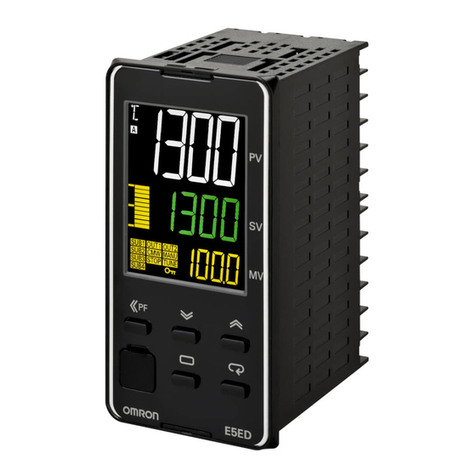
Omron
Omron E5ED instruction manual
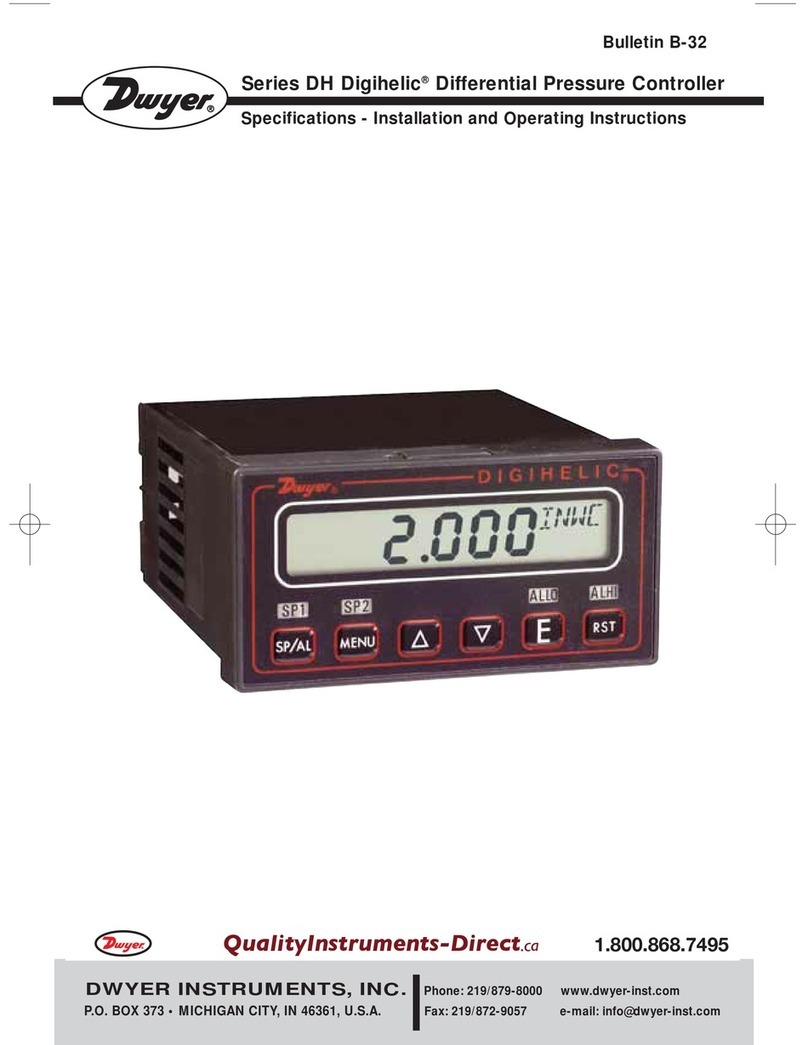
Dwyer Instruments
Dwyer Instruments DH Digihelic DH-008 Specifications-installation and operating instructions
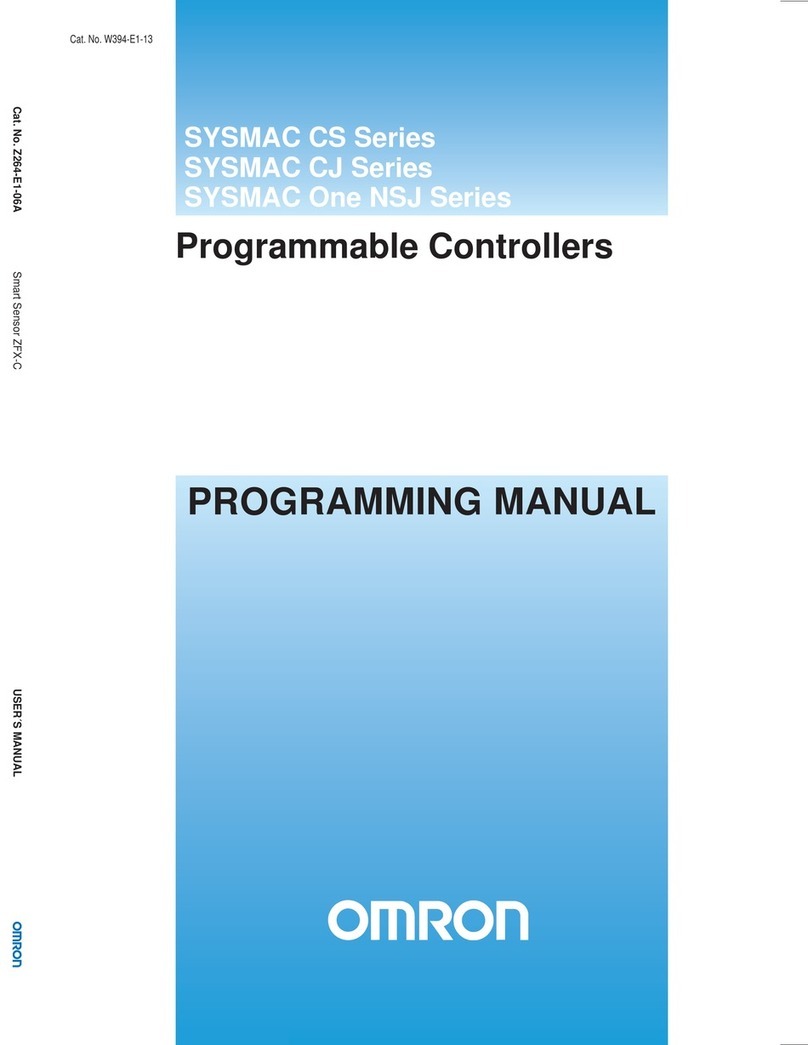
Omron
Omron CJ - PROGRAMMING 08-2008 Programming manual
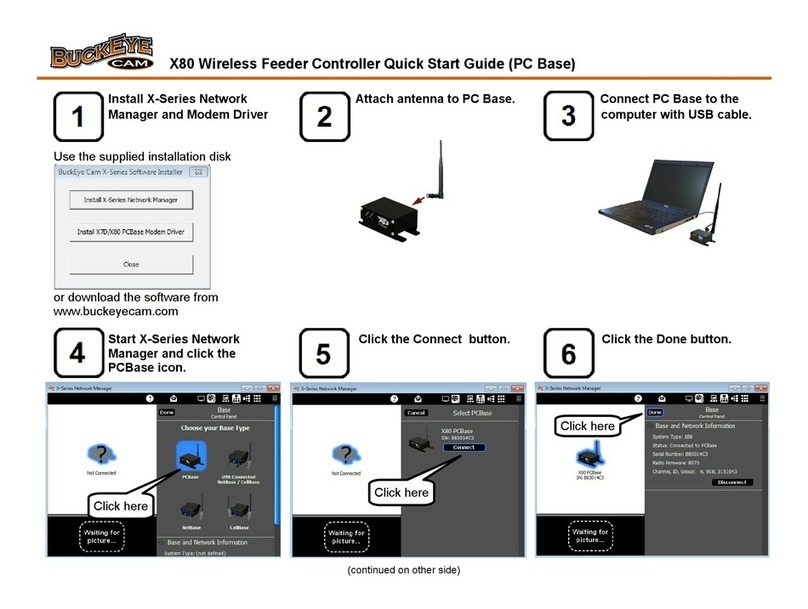
BuckEye Cam
BuckEye Cam X80 quick start guide
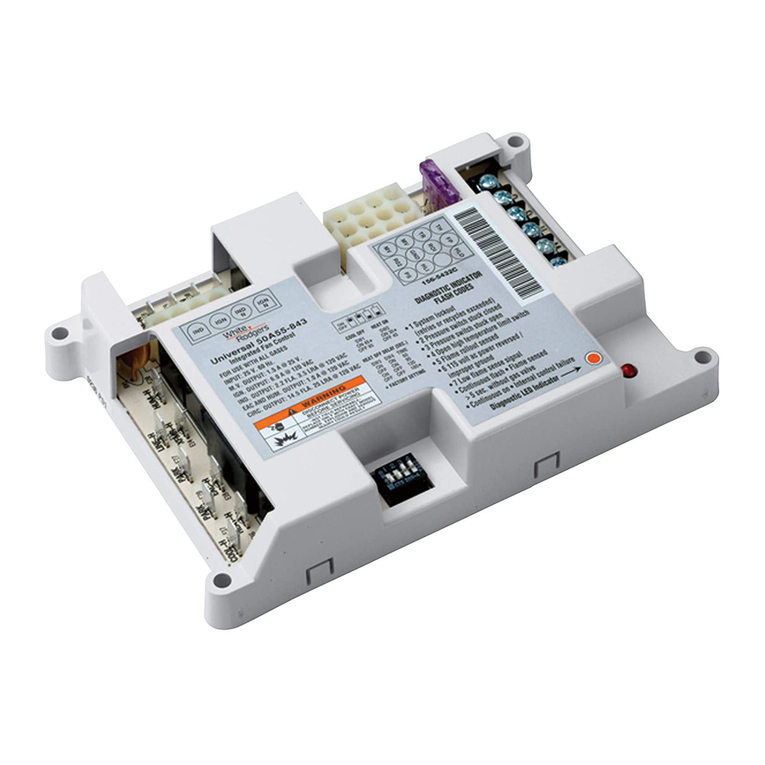
White Rodgers
White Rodgers 50A55 troubleshooting guide
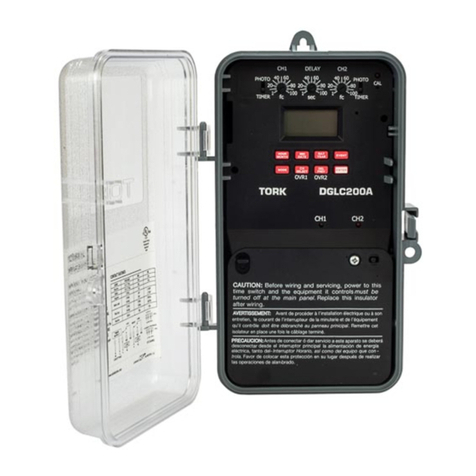
Tork
Tork DGLC Installation & operation

